Earthshine, Comet Tsuchinshan-ATLAS, Aurora Borealis!
Posted: 11 May 2024
|
Open: Friday, 10 May 2024, 1813 MST Temperature: 91°F |
Session: 1965 Conditions: Clear, breezy |
Equipment:
12" f/8 LX600 w/StarLock
2" 24mm UWA eyepiece
12x50 binoculars
Camera:
D850 DSLR
iPhone 15 Pro Max
1818 MST: LX600 ON, StarLock OFF, High Precision OFF.
Viewed the crescent Moon, 102X.
Prepared the D850 DSLR for imaging and mounted the D850 at prime focus.
1829 MST: Relaxed on the observatory patio bench.
1914 MST: Setting Sun, iPhone 15 Pro Max, Camera app (5X lens, digital zoom).
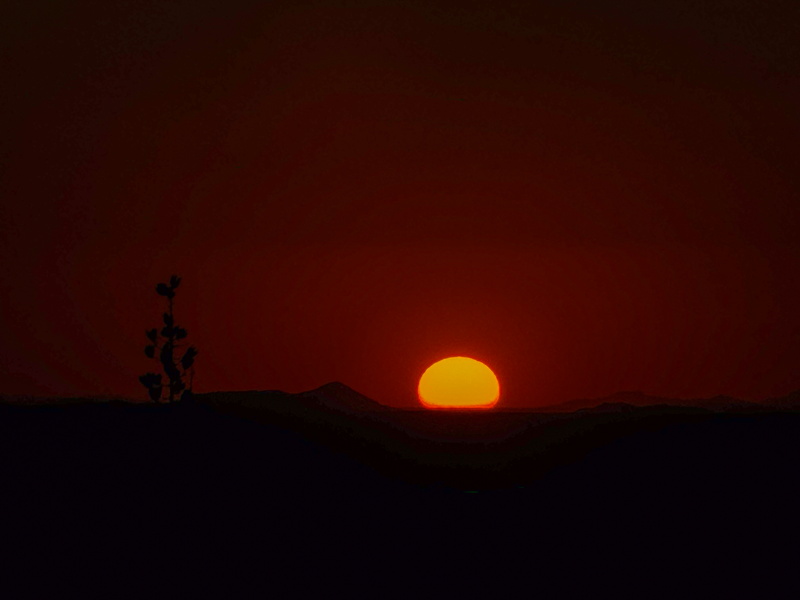
1916 MST: Sunset. Calm now.
Moon and Earthshine, D850 DSLR, prime focus, ISO 400, 1/30sec and 1 second.
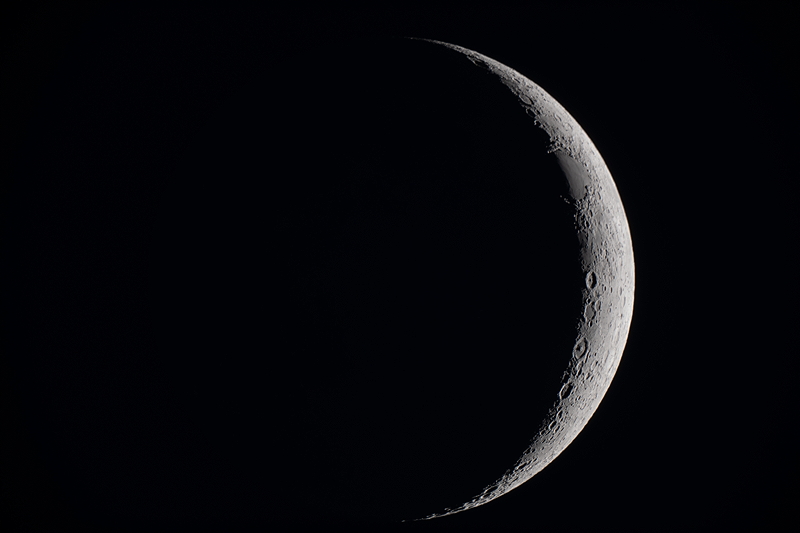
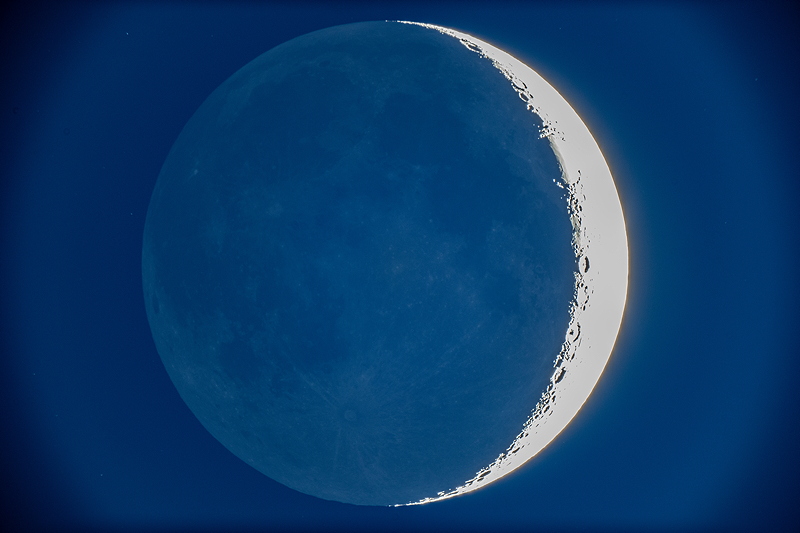
2010 MST: I saw a faint glow in the northern sky that I suspected was the Aurora Borealis (Northern Lights). I took this handheld iPhone 15 Pro Max photograph using the Camera app (Night Mode, 3 seconds, 1X lens). It confirmed I was seeing the Aurora! I took several photos over a period of a few minutes.
2014 MST
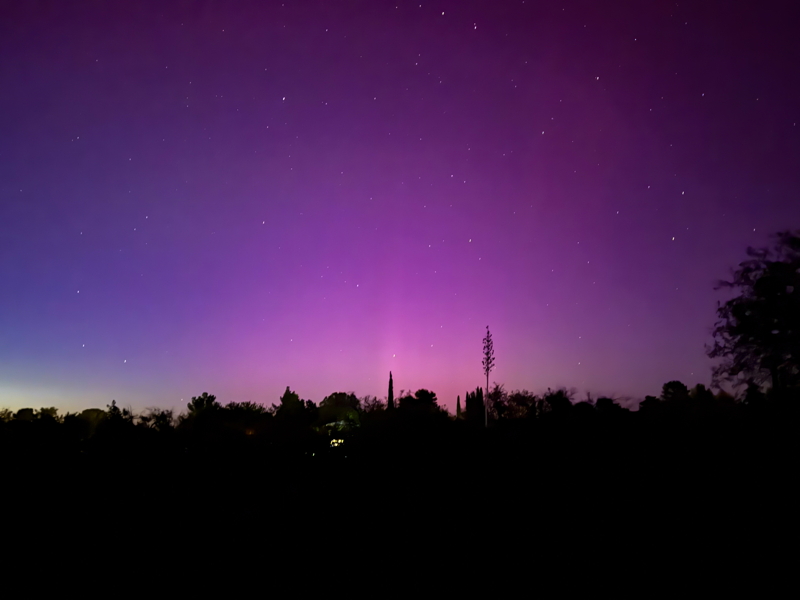
2015 MST
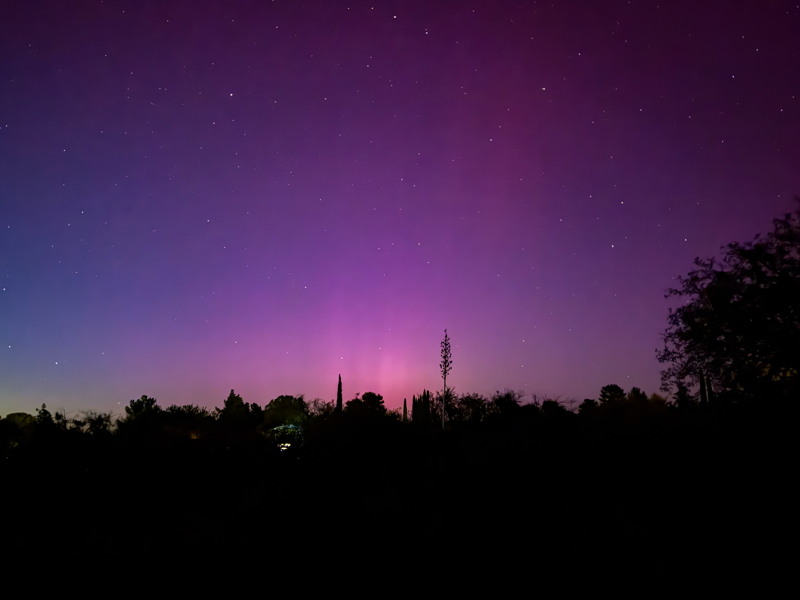
2020 MST
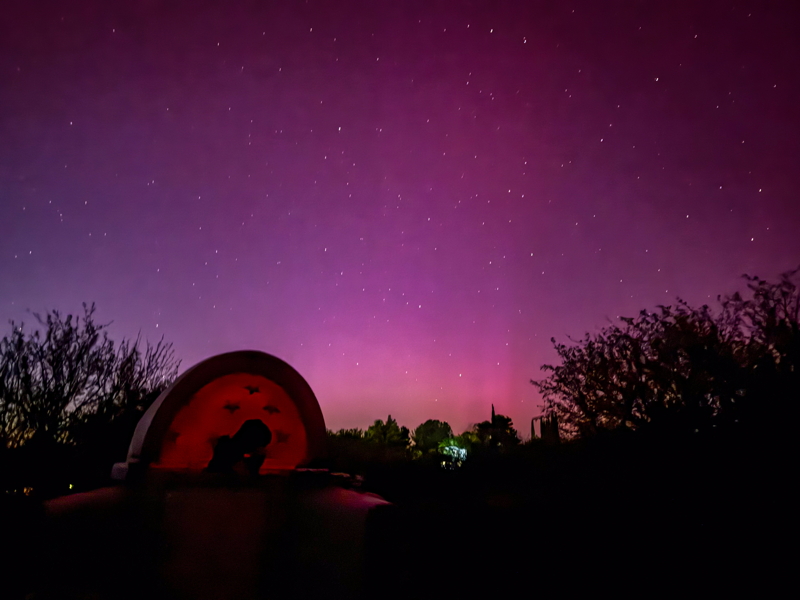
2029 MST
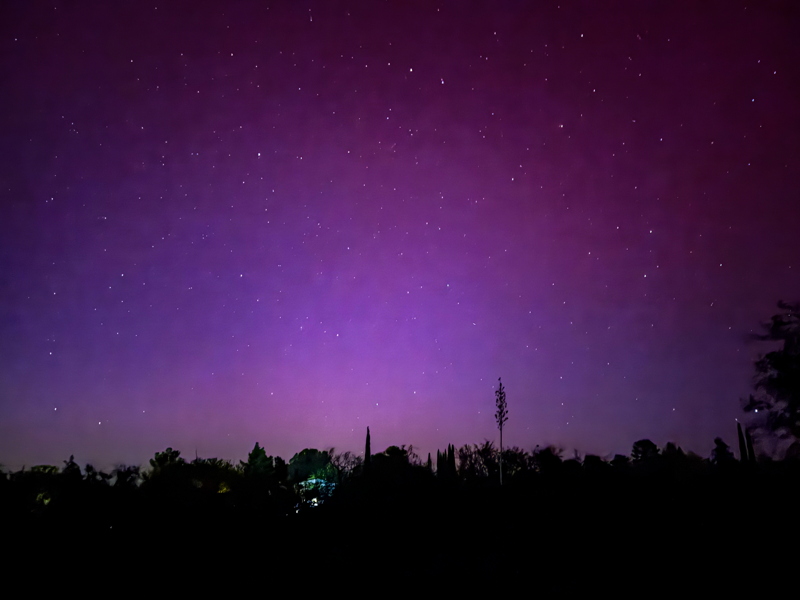
2030 MST: As seen in the last photo above, the Aurora was fading. I went back to the 12" telescope.
2049 MST: StarLock ON.
2055 MST: Comet Tsuchinshan-ATLAS (C/2023 A3), StarLock autoguided, D850 DSLR, prime focus, 1 minute, ISO 3200. I was surprised that the red glow of the Aurora was visible in the image with the comet near the Zenith.
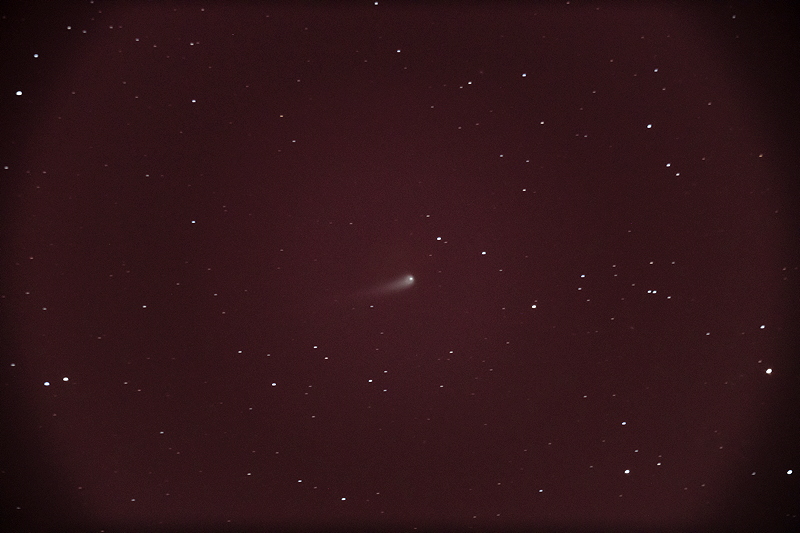
2057 MST: StarLock OFF.
Mounted the D850 DSLR on a camera tripod for imaging the Aurora. I then viewed Comet Tsuchinshan-ATLAS, 102X. The coma and a short tail were visible.
2126 MST: Aurora Borealis, D850 DSLR, f/2.8, 10 seconds, ISO 1600, FL 14mm UWA lens.
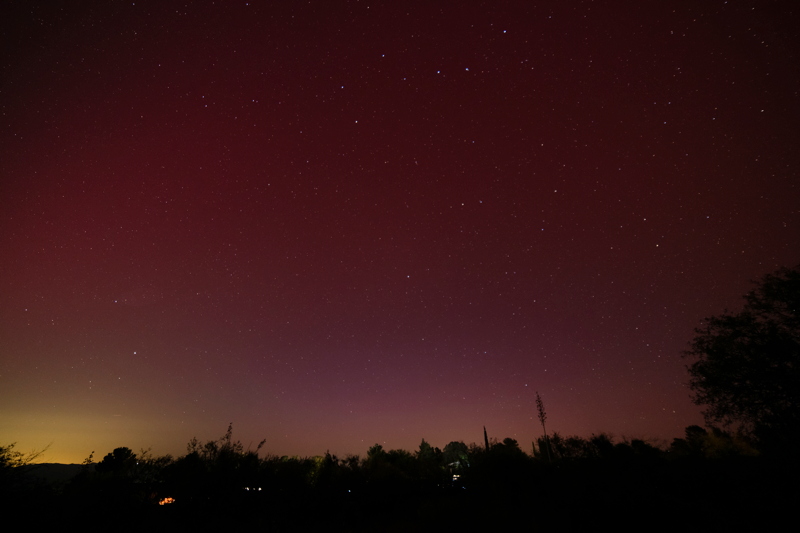
2140 MST: Viewed Omega Centauri (globular cluster), 12x50 binoculars. Then viewed Omega Centauri, 102X. Viewed M13 (Great Globular Cluster in Hercules), 102X.
2203 MST: No Aurora was seen or photographed.
Viewed the Ring Nebula (M57), 102X.
2235 MST: LX600 OFF.
2243 MST: Took a Sky Quality reading. Faint Aurora at the Zenith really lowered the reading.
|
Close: Friday, 10 May 2024, 2246 MST Temperature: 59°F |
Session Length: 4h 33m Conditions: Clear, SQM 20.74 |
At midnight I went outside and was pleasantly surprised to see Aurora again. Even bright pillars were visible to the eye! Took these handheld iPhone 15 Pro Max photographs using the Camera app (Night Mode, 3 seconds, 1X lens).
Saturday, 11 May 2024, 0003 MST
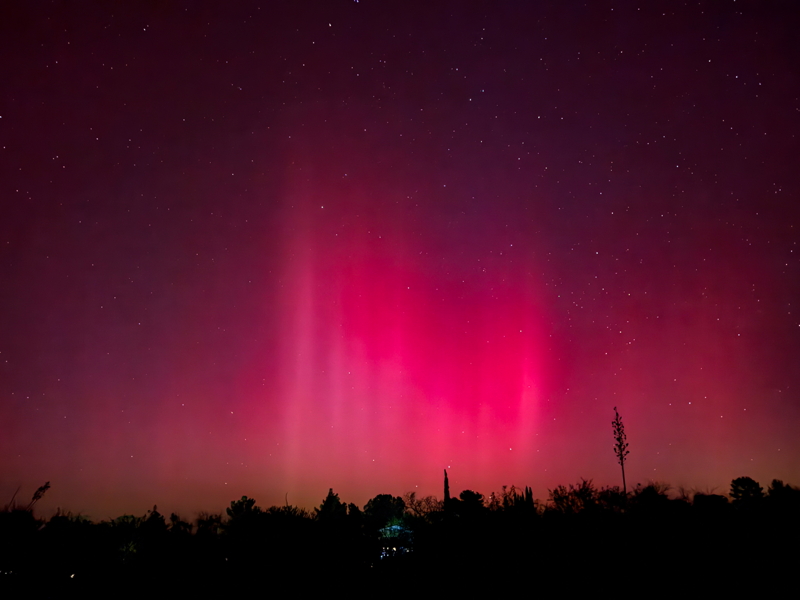
Saturday, 11 May 2024, 0006 MST
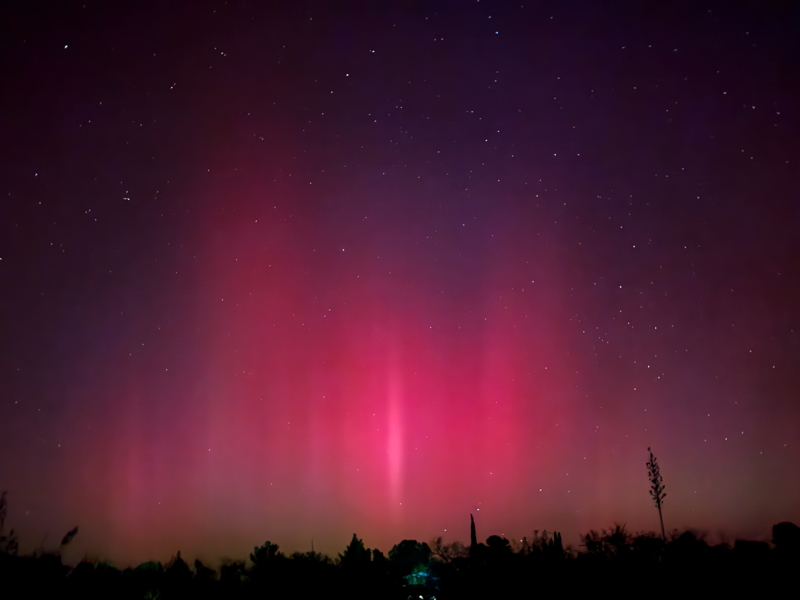
Saturday, 11 May 2024, 0013 MST
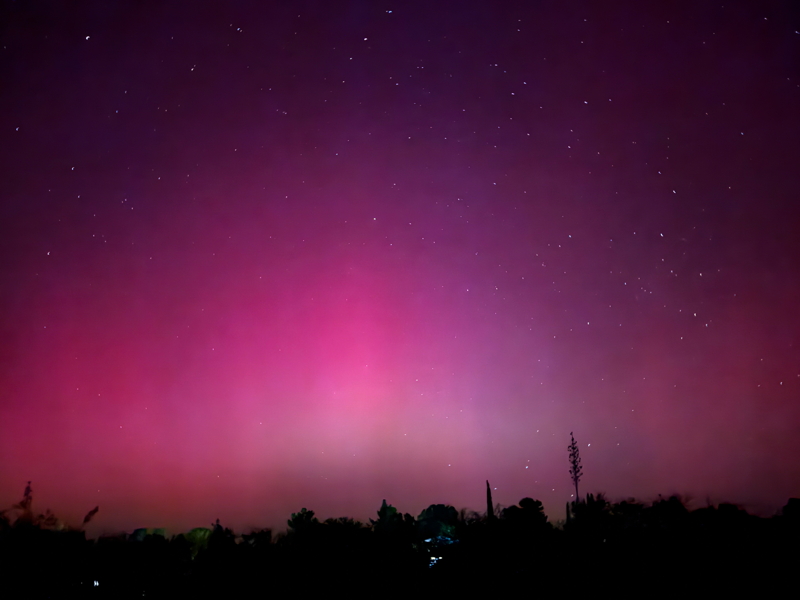
Saturday, 11 May, 0130 MST: I went back outside. At first there was no Aurora visible. But the Milky Way was nicely visible, as seen in this handheld iPhone 15 Pro Max photograph using the Camera app (Night Mode, 3 seconds, 1X lens).
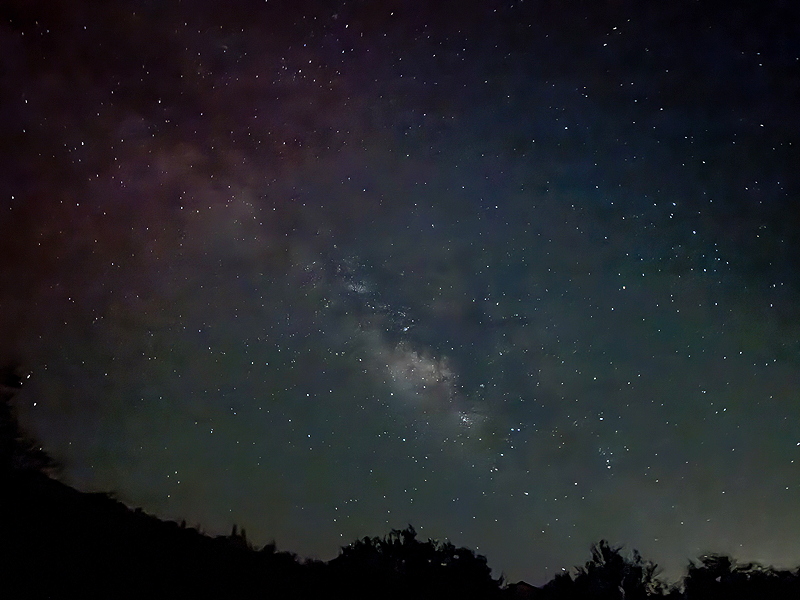
In the image I noticed a slight red glow in the upper lefthand corner. I took this handheld iPhone 15 Pro Max photograph using the Camera app (Night Mode, 10 seconds, 1X lens) pointed towards to the Summer Triangle near the Zenith. The red glow from the Aurora is very obvious.
Saturday, 11 May 2024, 0139 MST
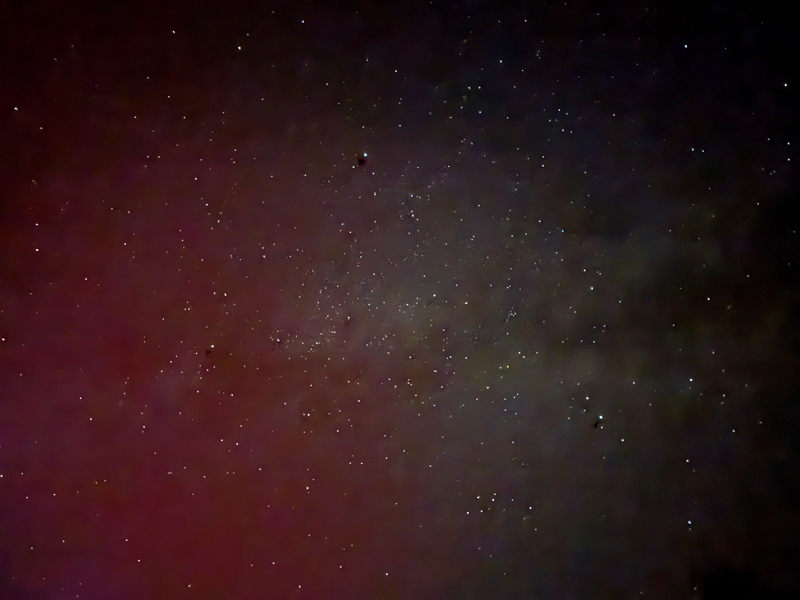
I then noticed more pillars in the northern sky. They were rapidly changing, as seen in these handheld iPhone 15 Pro Max photographs using the Camera app (Night Mode, 3 seconds, 1X lens).
Saturday, 11 May 2024, 0140 MST
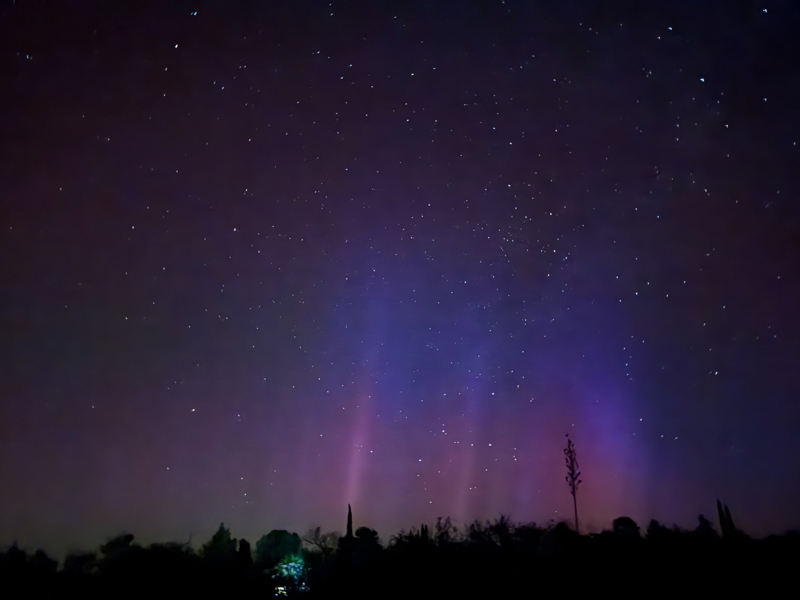
Saturday, 11 May 2024, 0142 MST
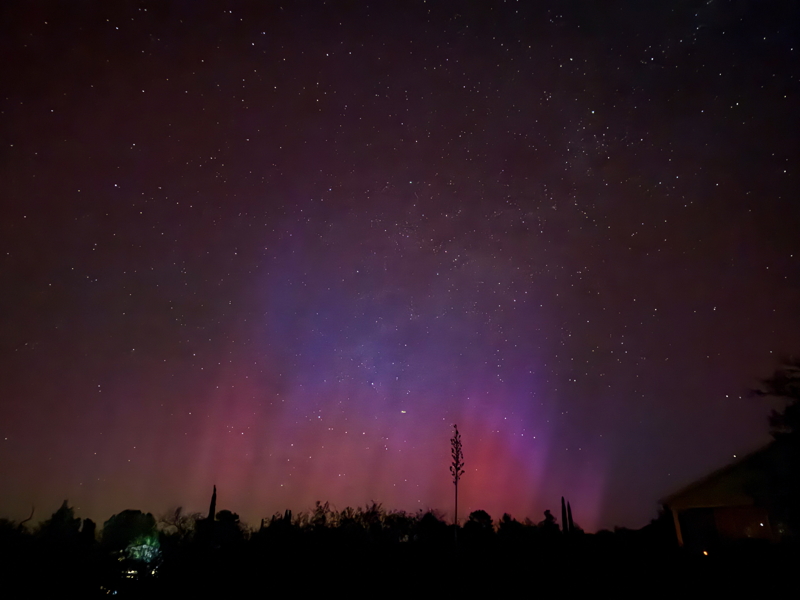
Saturday, 11 May 2024, 0142 MST
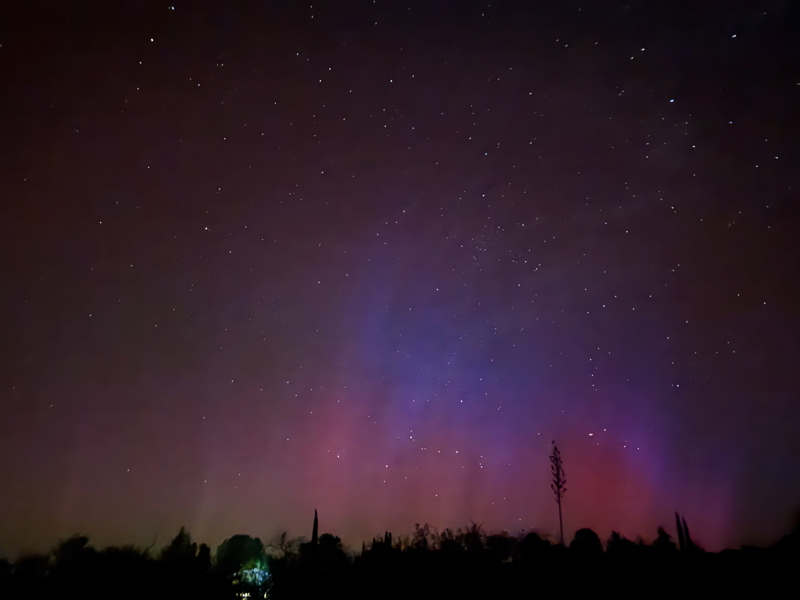
Saturday, 11 May 2024, 0143 MST
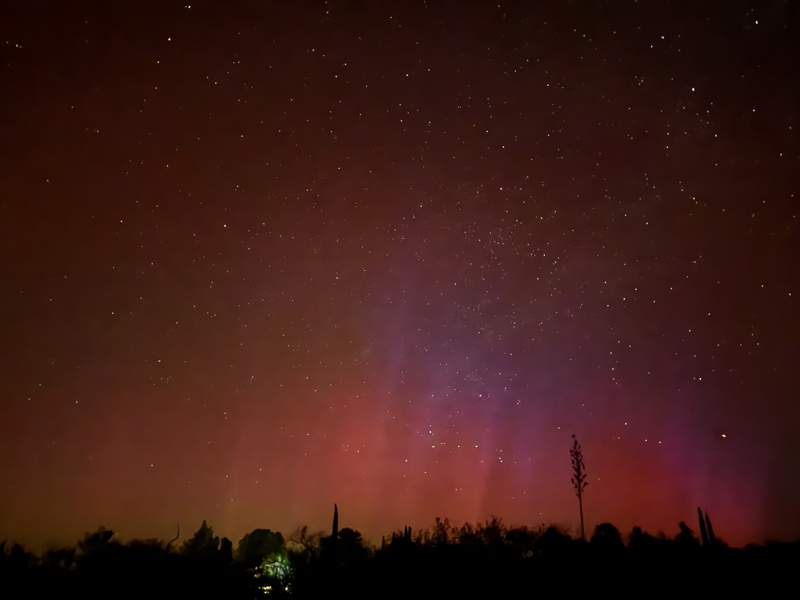
Saturday, 11 May, 0300 MST: No Aurora was visible or photographed.
Wow! What an incredible experience to see the Aurora Borealis (Northern Lights) from southern Arizona, Latitude 32.6°!!! The very strong geomagnetic storm is forecast to continue through the weekend. I'll be watching!
Comments are welcome using Email. Please read the Email Etiquette guidance.
Cassiopeia Observatory Home Page
Copyright ©2024 Michael L. Weasner / mweasner@mac.com.
URL = http://www.weasner.com/co/Reports/2024/05/11/index.html
